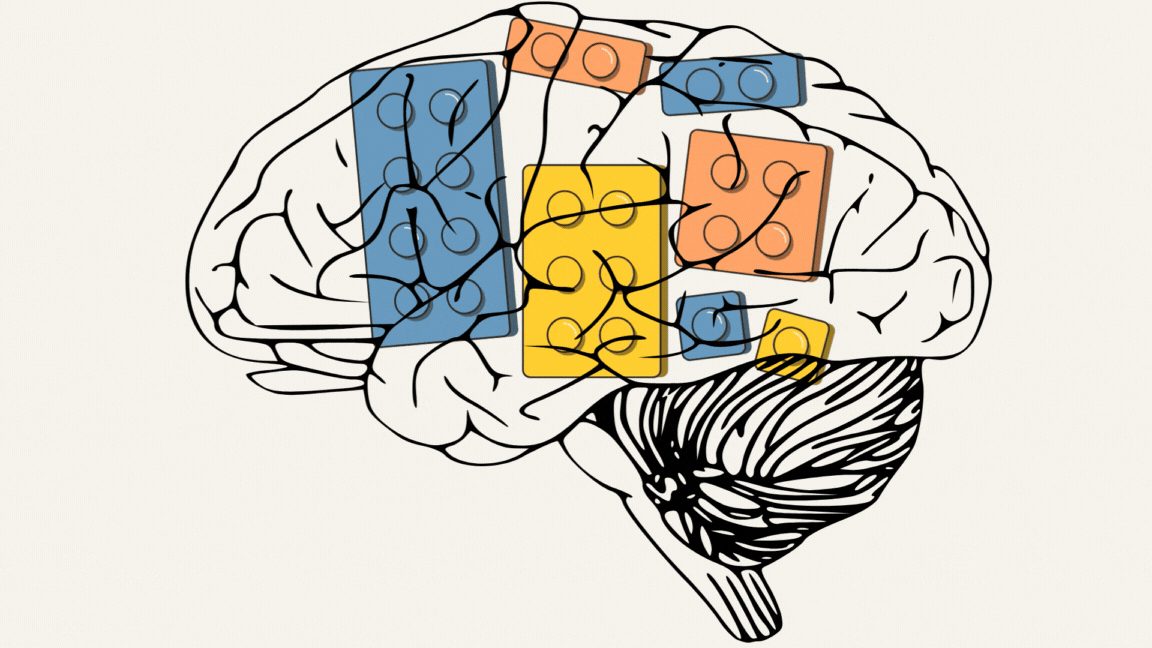How Brains Are Built
The Science of Experience-Dependent Neural Development
By Meghan H. Puglia
7 July 2025
The first 1,000 days—from conception to age three—are often called “critical” for brain development. But what does that actually mean? And what can we as caregivers do to support it?
As a developmental neuroscientist and parent, I’ve spent my career studying how babies’ biology interacts with the environments they grow up in—shaping who they become in profound and lasting ways. The truth is both empowering and humbling:
Every early interaction, sensation, and relationship helps lay the foundation for a child’s brain.

Brain development begins before birth. During pregnancy, neurons form, migrate into place, and start wiring up the earliest brain circuits.
By the third trimester, babies can already hear, feel, and even see light filtered through the womb. That’s why talking, singing, and gently touching your belly isn’t just sweet—it’s already helping to build a brain under construction.
Development follows a bottom-up sequence—starting with basic regulatory systems (like heart rate and sleep-wake cycles), then sensory systems (touch, hearing, vision), and finally higher-order thinking (like attention, self-control, and planning). Many of these systems begin forming before birth, but they continue maturing throughout early life.
Take vision, for example. Newborns can sense touch and sound long before they can see clearly. In fact, their visual system doesn’t fully mature until around age three. At birth, a baby can best focus on objects about 8 to 12 inches (or roughly 20–30 cm) away—perfect for gazing into a caregiver’s face while being cradled in their arms. Baby’s eyes are especially tuned to contrast, like the darks and whites of the eyes, helping them lock onto faces from day one.
At birth, a baby’s brain is about 25% the size of an adult’s. But it doesn’t just get bigger—it gets more connected, more efficient, and more specialized.
So how does this whole brain-building process work?
Brains run on soups and sparks: electrical signals (sparks, or action potentials) travel down neurons and trigger chemical messengers (the soup, aka neurotransmitters) that help neurons talk to each other.
Babies are born with nearly all the neurons they'll ever have—about 86 billion, just like adults.
It’s like having all the raw materials and blueprints for every possible house you might want to build.
What changes dramatically is the number of connections between those neurons.
In the first few years, the brain forms synapses, or connections, at a breathtaking pace—up to a million new connections per second. This early burst of wiring gives the brain a kind of “starter pack” of possibilities.
As the baby grows, the brain strengthens the circuits it uses often, and trims away—or prunes—the ones it doesn’t use.
In other words: “use it or lose it.”
Cue the Seinfeld reference: When the sparks stop flying between neurons, the brain essentially says, “No soup for you!” to that unused connection.
This is how the brain tailors itself to a child’s world—by reinforcing what’s needed and letting go of what’s not. It's why children don’t just inherit skills; they build the ones they practice.
Experience Is the Brain’s Architect
Critical vs. Sensitive Periods
Some parts of the brain are especially sensitive to experience during specific windows of time—known as sensitive periods (when development is most flexible) or critical periods (when certain inputs must be present, or the opportunity is lost).
Think of a critical period like a heavy door that swings open for a bit… then slams shut and locks. Missing a critical period can lead to irreversible changes or deficits. For example, if a child doesn’t get visual input during the critical period for vision, the brain never fully develops the ability to see—even if the eyes are healthy.
Sensitive periods, on the other hand, are more like screen doors. They typically close more gradually, giving the brain more time for experience to make an impact. And if you’re determined enough, you can still bust through after they’ve shut—just expect it to take more effort. Language is a great example: kids are most sensitive to learning it in the first few years. We can still learn new languages later in life, but it usually takes more work—and often comes with signs like non-native accents.
Of course, timing is only part of the story. What the brain is exposed to is just as important.
Bracing the Brain for Life’s Weather
Here’s where things get serious: while the developing brain is incredibly plastic—meaning it can change in response to experience—it’s also vulnerable.
Prolonged, unbuffered stress (like ongoing neglect, exposure to violence, or household instability) can disrupt how the brain processes emotions, threat, and memory. Over time, this can lead to heightened reactivity, difficulty regulating emotions, and increased risk for mental and physical health problems.
The good news? Safe, stable, nurturing relationships act as powerful buffers—helping the brain stay on track even in tough environments.
Resilience isn’t just about “bouncing back.” It’s about how well the brain is prepared to meet the demands of its world. Brains are prediction machines, constantly learning from the past to anticipate what comes next. When a child is raised in an environment that matches the one they live in later, the brain’s predictions are on point. But when there’s a mismatch—say, growing up in chronic stress and then trying to function in a calm, structured environment (or vice versa)—those early adaptations can become liabilities.
That’s why early intervention—like parenting support and high-quality early education—matters so much. It helps build brains that are flexible, prepared, and ready for change at a time when they’re most plastic and adaptable.
So how do we nurture those flexible, resilient brains to build strong, adaptable neural circuits?
Repetition & Variety:
Two Key Tools for Brain Construction
Repetition is essential for strengthening connections.
Variety is what gives the brain its flexibility.
Repetition is the secret sauce of early learning. It’s why kids love routines and re-reading the same books. It might seem boring to us, but to a growing brain, repetition is reassurance, prediction, and practice—all rolled into one. Every repetition strengthens the connections between neurons, helping the brain say: “Ah, this matters. Let’s keep this one.”
But brains don’t just need repetition—they need range.
Whether it's seeing multiple faces, exploring new textures, or being exposed to different environments and routines, variety helps the brain learn how to adapt. Introducing just the right amount of unpredictability builds systems that are both stable and flexible.
In my lab, we study something called neural variability—the natural fluctuations in brain signals that reflect a system’s capacity to explore, adjust, and respond to change. Brains that are too rigid—or too chaotic—can struggle. But the “just right” amount of variability—like the “Goldilocks” of neural signaling—is associated with better learning, attention, and resilience.
Translation?
Together, repetition and variety help wire a brain that learns from the past, makes good guesses about what’s next, and adjusts on the fly—
like a tiny Bayesian analyst in footie pajamas.
What Does This All Mean for Parents and Caregivers?
You don’t need fancy flashcards, high-tech apps, or trilingual toys to support brain development. You’ve already got all the tools you need in your toolbox: What kids need most are safe, responsive, and engaging environments.
In fact, the simplest moments are often the most powerful:
-

Talk to your baby.
Read. Sing songs. Narrate what you’re doing. Describe what you see, hear, or smell. Even though these early conversations will be met with little more than gurgles—they’re wiring the brain for language, attention, and connection.
-

Follow their lead during play
Yes, even if it’s the 47th round of peek-a-boo. Your child is drawn to the activities their brain is ready to practice—so when you follow their lead, you're meeting them right where learning is happening.
-

Provide emotional support.
Offer comfort when they’re upset. Delight when they’re curious. You can’t “spoil” a baby with too much love or responsiveness. Co-regulation—helping babies manage their big feelings—provides critical foundation for self-regulation later on.
-

Let them safely explore
Let them climb, splash, squish, and make mistakes. Variety—even everyday outings to the park, grocery store, or library—exposes kids to new sights, sounds, and social experiences that build flexible, adaptable neural pathways. Giving them the chance to explore, experiment, and find their own solutions helps wire the brain for resilience and creativity.
Every moment is an opportunity—not for perfection, but for connection.
Because it turns out, brains aren’t just built by biology. They’re built by you.
Want More Science-Backed Parenting Insights?
This is just the beginning. I’ll be sharing more on how early development unfolds—and how we can support it as caregivers, educators, and advocates.
What moments have made you stop and wonder, what’s going on inside that growing brain?
Let me know on your favorite platform, I’d love to hear from you!







